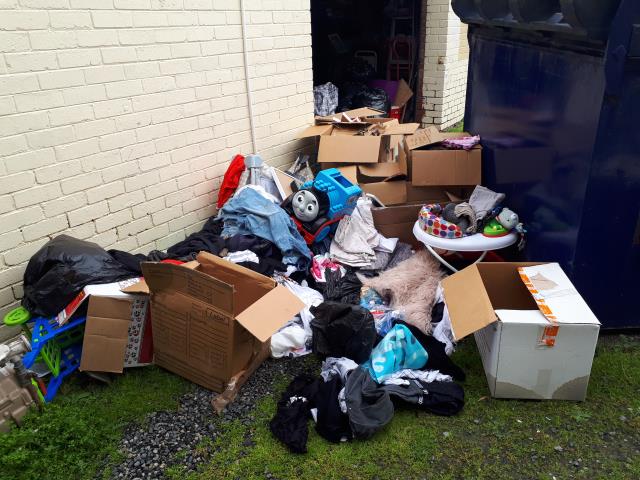Did you know that 90 percent of all donations left OUTSIDE charitable stops or recycling bins end up in landfill?
And given that Easter and key holiday periods are when the bulk of donations happen … that is a lot of preloved clothing, household textiles and other items not getting a new lease on life or benefiting those in greatest need.
And sadly, those primarily responsible for this enormous waste are those generous, well-meaning donors who unwittingly do the wrong thing, says Keep Australia Beautiful Vic (KABV), Enforcement Training Manager Travis Finlayson.
“They have just completed their Easter clean-out and head to their favourite charitable or recycle outlet only to discover it is closed for the long weekend. Determined not to waste the trip, they place their donations neatly at the front entrance to the store.
“There are several bags there already, so they’re convinced they’re doing the right thing.
“Alternatively, they decide to press on and head to the clothing recycle bin hub at their local shopping strip or train station. The bins there are already filled to overflowing so they deposit their items in a tidy pile next to the bin.
“Without realising it and in both scenarios, they have left their donations exposed to being rifled through, picked over and what is not stolen, scattered about in messy, windswept piles of litter, open to the elements.
“This often means those quality items are no longer saleable and most likely end up in landfill.”
Tragically charitable and recycling shops are having to foot the hefty disposal and landfill bill which is estimated to be around $3.4 million annually.
Determined to reduce this unnecessary waste and ensure donations go to where they are intended, leading environmental and advocacy group, KABV (via its Litter Enforcement Officers Network or LEON) has embarked on a Vic-wide public awareness and education campaign in the lead-up to Easter.
It has also joined hands with charitable and recycling shops, councils, land managers and the Environmental Protection Agency in a collaborative and highly coordinated effort to change donor behaviour.
While much of this effort has and will go into education and awareness-raising around ‘responsible donating’, a significant proportion will also go into prevention and enforcement.
According to Mr Finlayson this highly synchronised effort has already seen an increase in CCTV outside charity stores and at clothing bin hubs across Melbourne. It has also seen a significant uptick in signage warning people off donating out of hours or outside bins.
Some stores have even resorted to installing barriers or blocking off the front entrances to stop donations to closed stores while a growing number of councils are now contemplating reducing the number of resource recovery bins because they have become impossible to manage.
Mr Finlayson says sadly the increased surveillance has resulted in a growing number of donors being issued with fines in the push for maximum resource recovery and to reduce the number of donations ending up in landfill.
“However, it is important to point out that we are not ‘enforcement happy’ and that enforcement is very much the last resort. Rather we are trying to ensure that donations have a positive impact on our circular economy.”
Mr Finlayson stresses that people’s actions make a dramatic difference.
“Between 85-95 per cent of what is donated inside charitable stores during work hours or placed directly into recycle bins is reused or recycled. Where you leave your donations does matter!
“So, my big plea to all the wonderful donors out there: Let’s aim at diverting as much as we can from landfill this Easter. Let 2022 be a critical turning point and the moment where we all do our bit towards building a true circular economy!”







